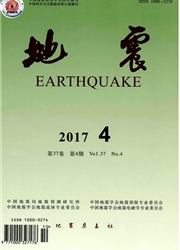

 中文摘要:
中文摘要:
本文基于重力资料,分析了青藏高原壳幔结构模型、高原陆内形变动力学条件、高原深部物质运动特征及动力学机制.研究表明,重力布格异常和自由空间异常除了分别反映大地水准面之下的“剩余”密度信息和大地水准面之上的“附加”密度信息之外,还可以组合在一起反映壳幔结构的流变学信息.在整体处于Airy重力均衡状态下,如果局部布格异常与空间异常同向减小,则是弱地壳强地幔的反映;如果布格异常减小空间异常增大,则是强地壳弱地幔的反映.笔者认为,青藏高原南部多为强地壳弱地幔地段,东部既有强地壳弱地幔地段,也有下地壳柔性-上地幔脆性地段,北部多为弱地壳强地幔地段.高原南北两侧板块边界的挤压力对高原做功,重力位能使高原物质向低位势转移,产生流变变形,导致南区和北区主要为挤压变形区,东区主要为构造伸展-侧向挤出区.由于壳幔结构的差异,不同地区驱动变形所需位能大小不同.相同位能条件下,南部更易于隆升,东部更易于流变伸展.
 英文摘要:
英文摘要:
Based on gravity data,this paper analyzed the crust-mantle model of the Qinghai-Tibet Plateau,and studied the geodynamic conditions and mechanism for the deep material movement.Gravity analysis shows that the southwest of the Qinghai-Tibet Plateau is mainly uplift in current tectonic deformation,while the crustal material flows and stretches to east.By combining of Bouguer anomaly and Free-air anomaly,we find that the southeast part of the Qinghai-Tibet Plateau has strong crust and weak mantle.The east region of the Plateau is flexible in the lower crust,and is brittle in upper mantle.Because of the differences in the crust-mantle structure,each region need its own potential energy to drive deformation.With the same potential conditions,the south and east regions will be more prone to deformation.Furthermore,the south area is easier to uplift,and the east area is easier to extend.As a result,the west part is mainly an uplifting-thickening area,and the east part is mainly a stretch-lateral extrusion area.
 同期刊论文项目
同期刊论文项目
 同项目期刊论文
同项目期刊论文
 期刊信息
期刊信息
